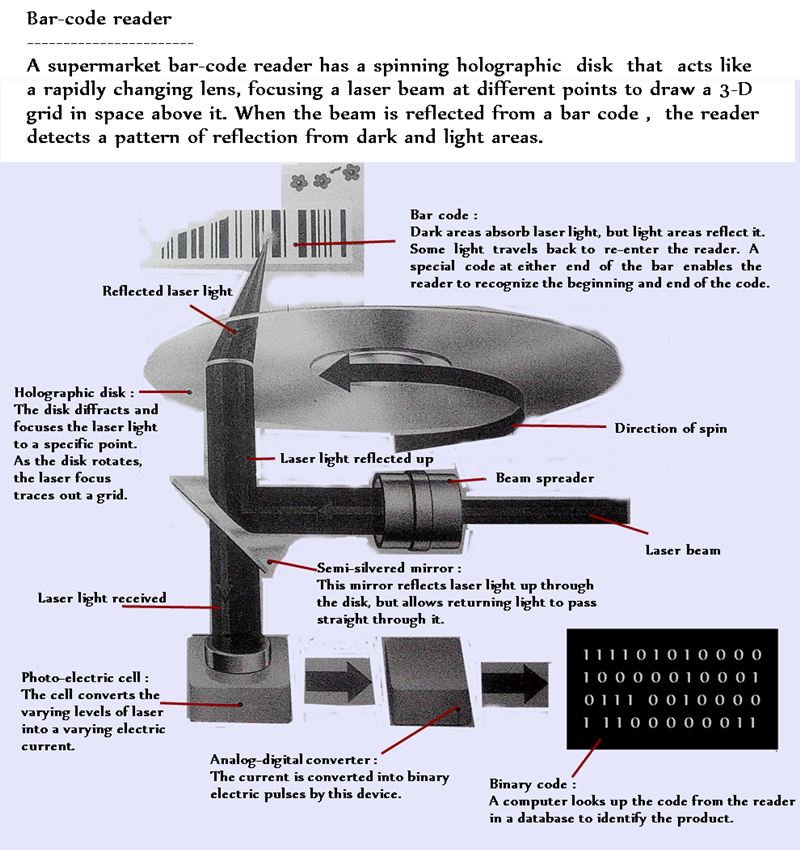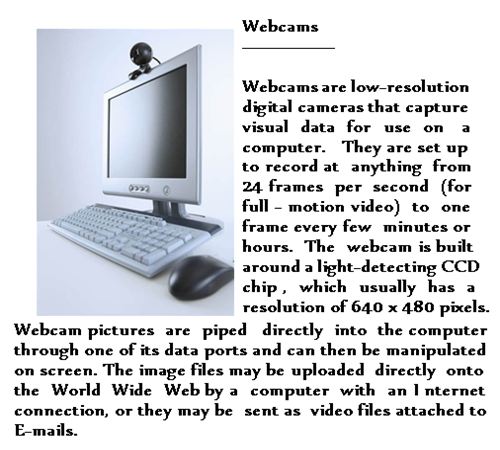Offices' Machines and Tools
Scanning devices
=================
Scanning devices allow visual information to be transferred into a computer. This information
ranges from simple black-and-white product bar codes to full-color photographic images. In
all cases, light is reflected by or transmitted through the object being scanned to collect data
on the brightness of different areas. This data is converted into an electric signal that is then
digitally encoded.
One of the most widespread scanning devices today is the flatbed scanner which was once
an expensive professional machine but is now a low-cost, personal-computer accessory.
Scanners divide up images into thousands of pixels (picture elements) for display on a computer
screen or reproduction by a printer. Low-cost scanners use fluorescent light and a series of
mirrors to direct reflected light from a strip of the image onto a charge-coupled device (CCD).
Professional drum scanners in the printing industry use a laser beam to scan the surface of the
original, and measure the intensity of the reflected light.
Bar-code scanners, which are even more widespread, measure the intensity of light reflected
from white an black areas on a bar code. The simplest bar-code readers are pens or guns that
are laid directly over the top of the bar-code, but more advanced models use sophisticated optics
to trace a laser beam through a three-dimensional grid of space, so it will pick up light reflected
from a bar-code held at almost any angle.


